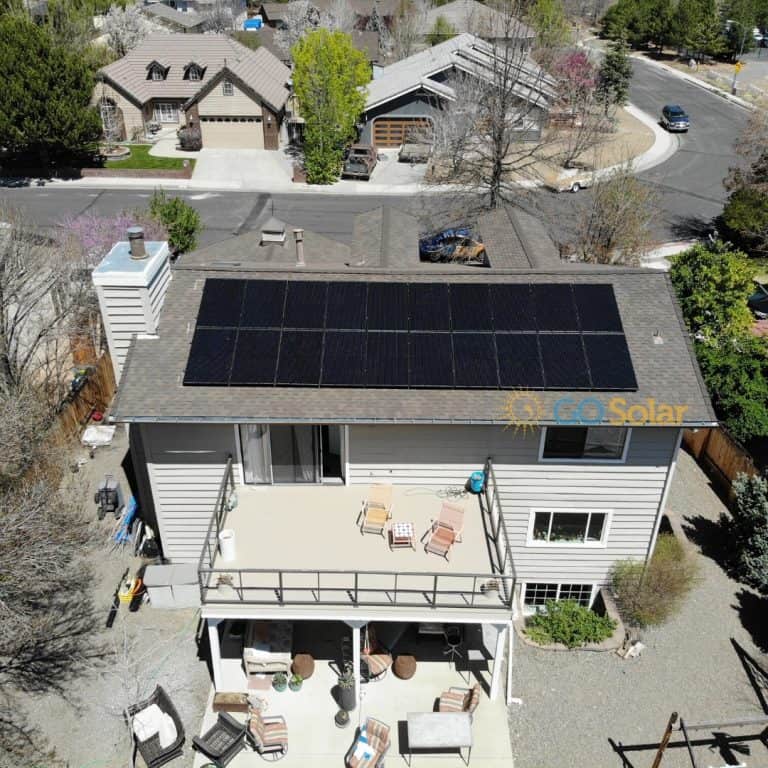Nevada Portfolio Energy Credits (PECs)

Nevada has a history of proving its worth in the solar industry. As a result, lawmakers realize that Nevadans care about renewable energy, specifically residential solar. Legislators have steps in place to help incentivize renewable energy, so utilities like NV Energy are more likely to support them, and homeowners can’t afford to miss out on the savings.
One of the incentives in place to help encourage renewable energy in Nevada are Portfolio Energy Credits (PECs). Through these credits, sometimes known as Solar Renewable Energy Certificates or Renewable Energy Certificates, utilities account for energy diversity, and the state can hit its renewable energy goals.
Through the trading of these credits, both homeowners and businesses with self-generated renewable energy, like solar, and the utility company benefit. Let’s take a look at what these credits look like in Nevada and how they work.
Renewable Portfolio Standard and PECs
A Renewable Portfolio Credit or Standard is the tracking metric for state renewable energy goals and standards within a renewable energy portfolio. Through these metrics, government officials determine how much renewable energy the state produces and what energy goals they can realistically achieve in the future.
State PEC acquisition, non-compliance regulations, and tracking differ. Tracking and implementation often depend on whether the state has portfolio goals or standards.
Portfolio goals are often lax compared to portfolio standards. In 2019 Nevada increased its Renewable Portfolio Standard to 50 percent by 2030. To enforce this standard, Nevada has high administrative fines and strict tracking procedures in place.
Administrative Fines for Non-compliance
Utilities and other power providers that don’t comply with the RPS receive a state-mandated, and Public Utility Commission enforced, administrative fine for every kilowatt-hour they have not produced.
Tracking PECs
Nevada’s renewable energy standards have electronic tracking through PECs, which are issued through Nevada Tracks Renewable Energy Credits (NTREC) or Western Renewable Energy Generation Information System (WREGIS). Only credits received through one of these two organizations count towards Nevada’s Renewable Portfolio Standard.
PEC Rollover Restrictions and Regulations
One of the frequently asked questions about PECs is how long they will last. In Nevada, when utility companies retire their credits for a compliance year, they can roll excess credits over into future years. However, the credit will expire four years after it was issued.
Participating in the PEC Trading Program
There is a wide range of renewable energy systems that qualify for the PEC trading program. In addition to solar, these include biomass, geothermal, wind, and certain hydropower facilities.
Generally, those participating in the trading program receive one credit per kilowatt-hour of electricity their residential solar array produces, which is equivalent to 1,000 watts. However, customer-maintained distributed renewable energy systems can receive an additional 0.05 credits per kilowatt-hour.
Customers who trade their credits receive a yearly payment from the utility company they traded with for their system’s production. The rate these customers receive varies since the market value of the credit changes. For a homeowner to participate in the PEC trading program, they need to register their eligible renewable energy system for credits through the NTREC or WREGIS.
Eligibility for Trading Program
Most customer solar facilities qualify for the trading program. All they need to do is fill out the PUNC application with their final site plan. However, systems that take advantage of a Nevada renewable energy incentive program are not eligible for the trading program.
PEC vs. NV Energy Rebate
Since programs like NV Energy’s Renewable Generations rebate program disqualify individuals from participating in the PEC trading program, customers need to weigh the pros and cons of each before choosing one over another. The main difference between these two options is that PEC trading has the potential to pay customers more in the long run, but have no guarantee from one year to the next. On the other hand, rebate programs guarantee customers a payment, but often for less than they might get through the trading program.
Future of PECs in Nevada
The value of PECs is dependent on the energy standards of the state. Since Nevada has secured its standard until 2030, the value of PECs will either rise or stagnate unless companies reach the 50 percent requirement before 2030.
The fact that the standard is so much higher than the state’s current energy portfolio proves that companies will probably need help reaching these standards, particularly with commercial solar. Utility companies that want to escape these fees will be willing to pay the value of the credits instead of the fine.
The Ballot Question for 2020
Another indication that PECs will not be going away any time soon in Nevada is the SB358 precedent passed in 2019. While expected, the 2019 passing would normally warrant the need for an additional pass in 2020 to become a law. However, due to it being declared an emergency measure under Nevada’s legislative framework, Governor Sandoval approved the measure in April 2019.



Send a Message
Oops! We could not locate your form.